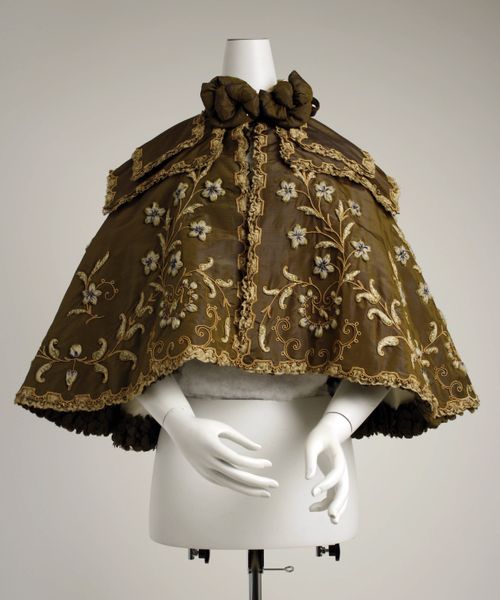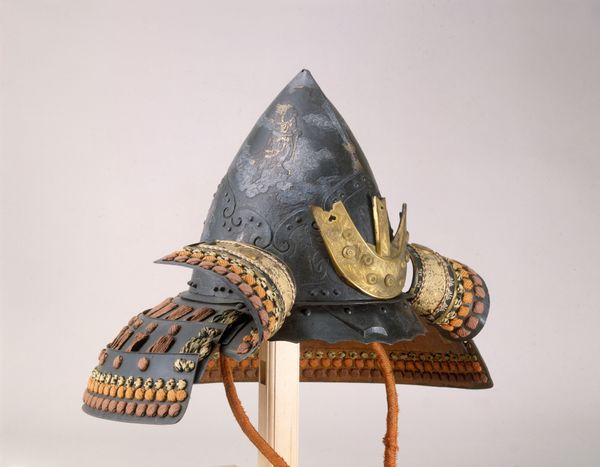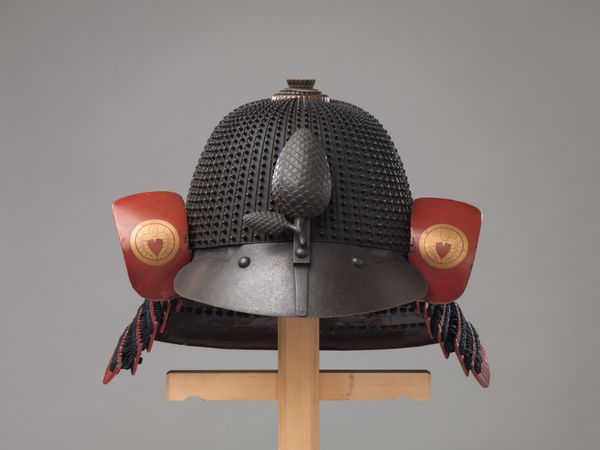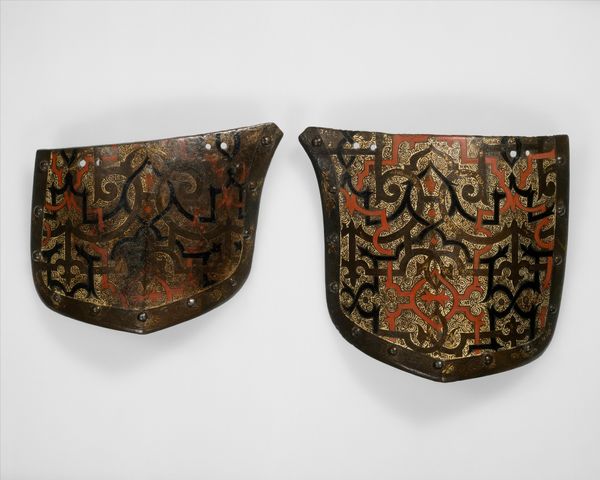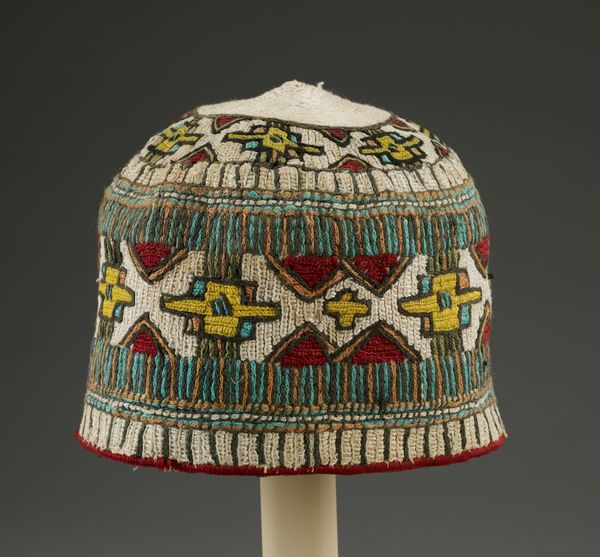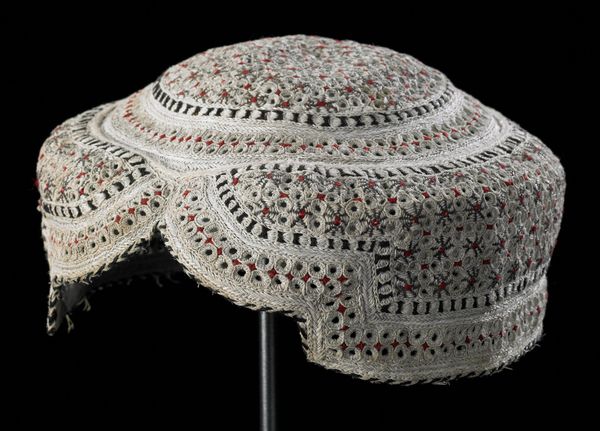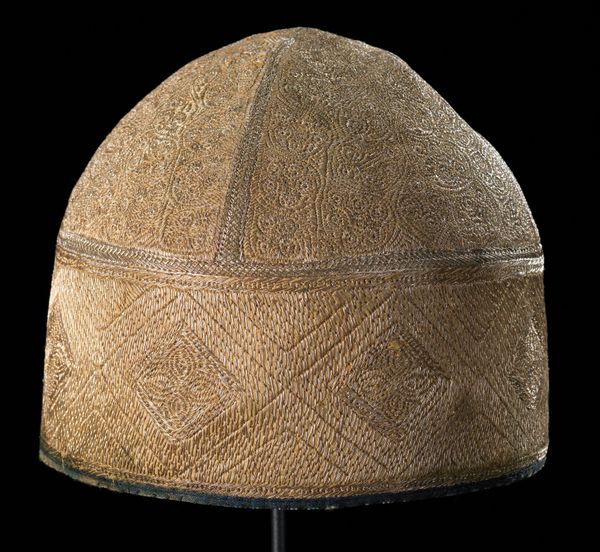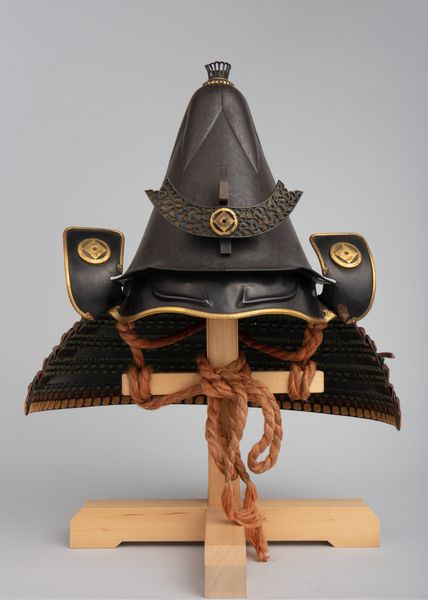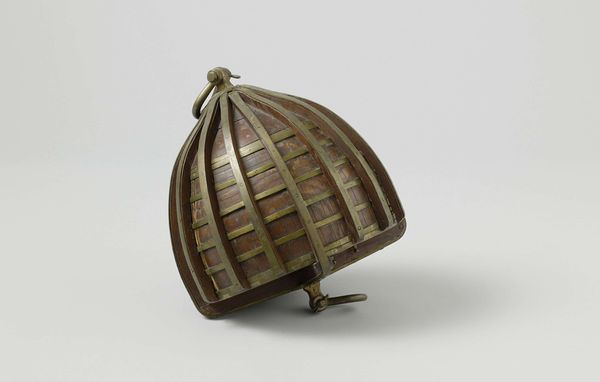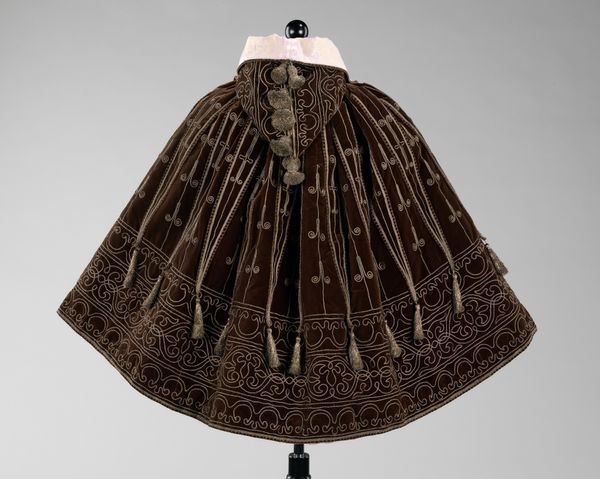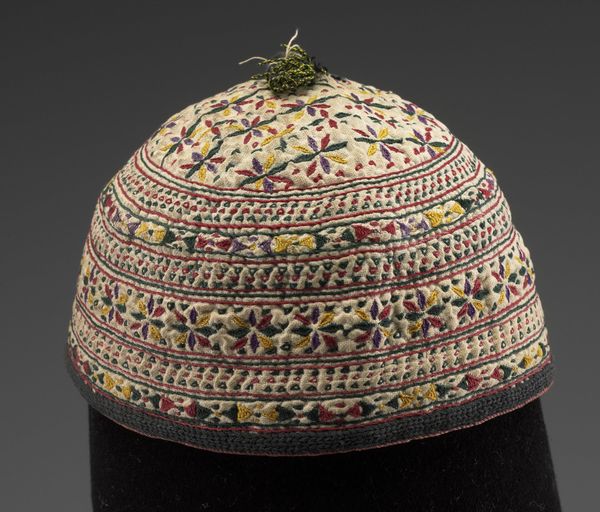
metal
#
metal
#
asian-art
#
historical fashion
#
armor
Dimensions: H. 11 1/2 in. (29.2 cm); W. 13 1/2 in. (34.3 cm)
Copyright: Public Domain
Curator: Here we have a Suji Kabuto, a helmet dated from 1570 to 1664. It is currently held at the Metropolitan Museum of Art. Editor: My first impression is one of both incredible detail and imposing protection. There is a decorative element but that does not distract from its purpose as a historical form of safety wear, if you can call it that. It feels both ceremonial and brutally practical, reflective of the world that produced it. Curator: Absolutely, this type of helmet exemplifies the blend of artistry and functionality inherent in Japanese armor. The name "Suji Kabuto" refers to the raised ribs, visible as lines, formed by the many plates joined together, riveted or laced. This specific construction provides both structural integrity and visual rhythm. And do you notice the decorative features, like the swirling vines that embellish the exterior? Editor: I do. Are we to consider it propaganda, or rather an expression of status? We cannot separate the use of armor with ideas about power, violence and the warrior class. Its decoration elevates this object beyond pure function. Did such armor democratize warfare or simply reflect feudal structures? Curator: I think that is correct. The floral and gilded motifs, as well as what seems to be a clan crest, definitely imbue it with deeper symbolic meanings. The use of such intricate decoration shows not only the patron’s wealth, and therefore status, but the symbolism they use helps construct cultural meaning and historical narratives through visual memory. Editor: Right. This is about establishing visual identity and projecting a powerful image, something of value even when off the battlefield. The helmet speaks volumes about class divisions, militaristic power structures, and the cultural weight of honor within this specific time. As an armor it physically separated certain men from common society and the possibility of being killed so readily, making it both a tool for physical separation and cultural. The ability to commission or even afford this was deeply ingrained with what caste one belonged to. Curator: So true! And from a different perspective, we should not underestimate the cultural continuity and symbolic legacy these items have had. They bridge a link between present viewers and past cultures, informing an essential historical sensibility to better see the future, both positively and critically. Editor: Indeed. The way these seemingly disparate elements coexist is compelling and creates a unique perspective on power, representation, and even death. Thank you for this illuminating journey, thinking about protection, status, violence, and honor all tied together!
Comments
No comments
Be the first to comment and join the conversation on the ultimate creative platform.
